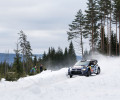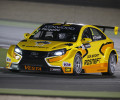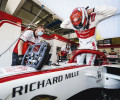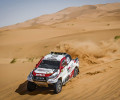FROM AUTO #12: Net profits
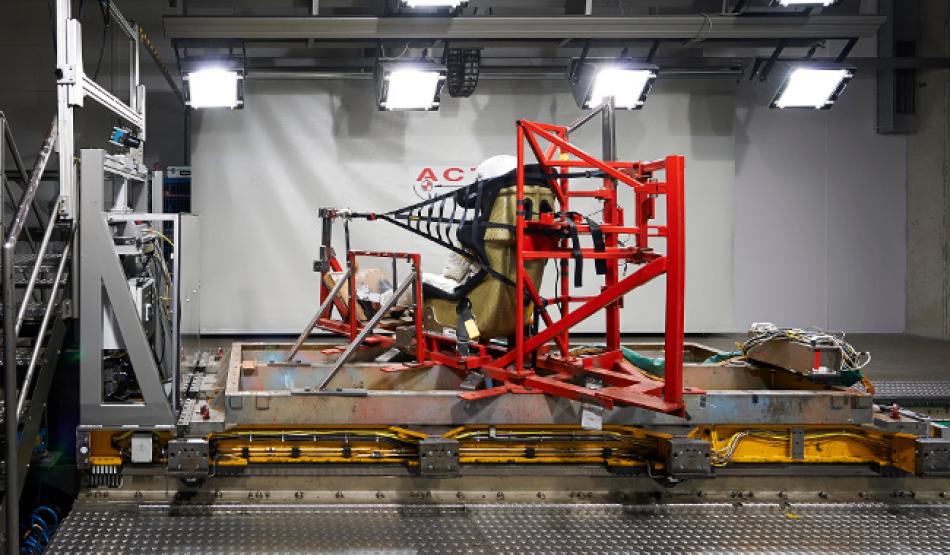
One of the most important safety innovations in motor sport in recent years has been the Frontal Head Restraint or HANS device, which is mandatory in all FIA championships. This equipment has made crashes survivable that were previously fatal, by preventing violent forward movement of the head and neck during frontal impacts.
Now researchers have been working on ways to improve this vital protection area in lateral and angled-side impacts.
The late Dr John Melvin, a founding fellow of the FIA Institute, conducted extensive research into this issue in partnership with NASCAR Safety Director Thomas Gideon. They conceptualised the idea of a net that surrounds the driver on either side to catch the head before it can make a violent motion sideways.
Andy Mellor, consultant for the Global Institute for Motor Sport Safety (GIMSS), the FIA Institute’s safety research partner, has been investigating this concept further. He has recently completed a series of tests, with funding from the FIA Foundation, to validate the use of racing nets in FIA championships.
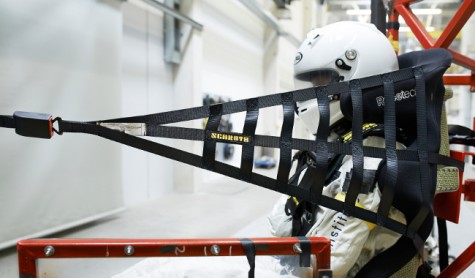
“The idea is that this net complements the protection provided by the other safety features,” says Mellor. “Frontal Head Restraints (FHRs) are designed to work in frontal and angle-frontal impacts, where if you’re in a severe crash and your body is rapidly stopped by the harness your head moves forward unrestrained until the tensile loads in the neck and at the base of the scull become excessive. These devices are designed to provide a restraining load-path for the helmet and head to limit the load on the neck and avoid neck injury. The seat itself is designed to protect the neck in rear impacts.”
The new racing nets are the final element in offering full 360-degree protection. This protection is already implemented in single-seater cars from Formula One to lower categories such as Formula 4, which, during side impacts, utilise the cockpit sides to support the shoulder and the headrest to support the head. In frontal impacts the head restraint takes over. “This system works very well in single-seaters and the racing net basically aims to reproduce this same level of protection in touring and GT cars,” says Mellor.
MILESTONE TESTS
Side impact accidents in closed cars can have tragic consequences. During the 2013 Le Mans 24 Hours, Allan Simonsen’s Aston Martin slammed sideways into the retaining wall of the Tertre Rouge corner, killing the 34-year-old. The angle of impact meant that the Dane’s FHR device and seat offered limited protection. Mellor believes that racing nets could off er improve protection in this type of accident.
“During an angled impact, the driver’s upper torso moves sideways relative to the seat and the head can move, unrestrained, forward and around the seat-side head support. This can result in a devastating motion of the neck stretching and bending around the side of the seat,” he explains. “The racing net is designed to prevent this injurious motion.”
The latest tests, at the ACTS laboratory near Frankfurt, were designed to replicate this type of accident. The test simulated a very severe angled crash at 150 kilometres per hour with a lateral impact acceleration of 70G on the dummy, which is similar to the crash that Simonsen suffered.
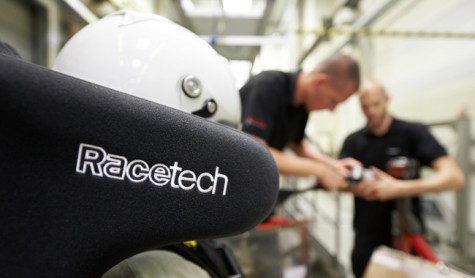
Racetech, whose seats are FIA-approved and used in various championships, provided five seats for the tests.
“We had an Accident Data Recorder on his car, so we know what the impact conditions were,” says Mellor. “In terms of an accident, the sled test simulates a car impacting a barrier at 150kph and an angle of 30 degrees.”
It is this type of oblique-angle accident that is so dangerous for a driver.
“If the car sustains a pure side impact, the FIA8862 seat does a very good job of containing and restraining the driver,” says Mellor. “But the racing net extends this protection during angled impacts as well.”
To replicate these forces in a laboratory, ACTS uses an ingenious system called Hyge, which very accurately simulates the deceleration pulse of an actual impact but in reverse. Rather than moving then stopping, the test sled starts in a stationary position before experiencing rapid acceleration, which produces the response measured during a crash event.
“The sled actually starts stationary and then the pulse takes it from zero to 70kph in a very short distance of approximately 400 millimetres. And then it gradually comes to rest along the track. It’s a sophisticated system with a very accurate computer controller over the crash pulse.”
Mellor has already tested the strength of the racing nets, which, for this work, were supplied by safety manufacturer Schroth.
During these tests, the main aim was to evaluate the installation and geometry.
“The critical adjustment was the vertical position of the racing net relative to the centre of gravity of the head. We know that if the upper strap of the net is vertically positioned close to the head’s centre of gravity then it works well, but we need to determine safe limits around this position: too high and it could cause neck compression but too low and the head could over-ride, missing the racing net altogether.
“So the main purpose of these tests was to validate those vertical positions. For each test we kept the seat in exactly the same position and we moved the net relative to the seat.”
This racing net, not to be confused with a window net (which is designed to keep a driver’s limbs in and debris out of a car), is secured to the roll cage around the back of the seat and attached to the front of the chassis at a single point. Two racing nets are fitted to each seat, one on the left and one on the right.
“They run longitudinally from the front of the car, down the side and then wrap around the seat and attach to the cage at three points,” says Mellor. “Each racing net has an upper, middle and a lower strap that attaches to appropriate points on the cage to ensure the right geometry.”
FINE-TUNING
Mellor and his team have had to consider other important safety aspects of the concept, such as the ability of the drivers to extricate quickly and to avoid obscuring driver vision.
“The racing nets need to release quickly after an accident so that a driver can get out of the car. To achieve this, they have a mechanical attachment at the front that gives a single point release. The driver pulls the release and the net drops away.”
Creating a safe installation that does not obscure vision has been ensured.
“The net needs to be close to the head’s centre of gravity to give optimum protection, but obviously the driver needs to be able to see over the net for lateral vision and also to see the mirrors,” says Mellor. “The solution we’ve ended up with is to define a line from the driver’s eye towards the side mirror and run the top edge of the net along that line. If the racing net is significantly above this it potentially obscures the vision but if it is too low the protection it offers may be compromised.”
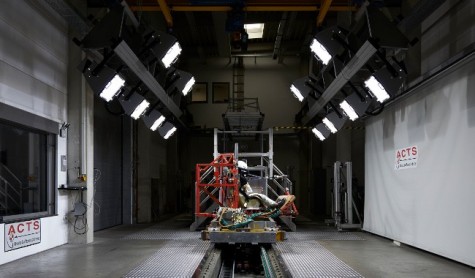
The Hyge angled-side impact test cleverly simulates the deceleration of an impact in reverse.
Numerous tests were run over four days at the ACTS facility. They were extremely successful from Mellor’s point of view and have enabled the GIMSS to confirm the installation guidelines for teams to use when installing the nets. The installation aspect of this research has been aided by Aston Martin, which, since Simonsen’s tragic death, has been fitting racing nets in its race cars.
“The new guidelines will enable all teams to fit the racing nets in a safe manner.”
As for when we will begin to see them in widespread use, the FIA is planning to mandate their use from the 2016 season onwards.
“Having shown that they provide so much additional safety and are low cost and easy to fit, the FIA is confident they can be mandatory for the FIA World Touring Car Championship for next year. After that we want to cascade it down as quickly as possible so that every single club car around the world should be using them.”
This article is from the latest issue of the FIA’s AUTO magazine. View the full issue here.

 Facebook
Facebook Twitter
Twitter